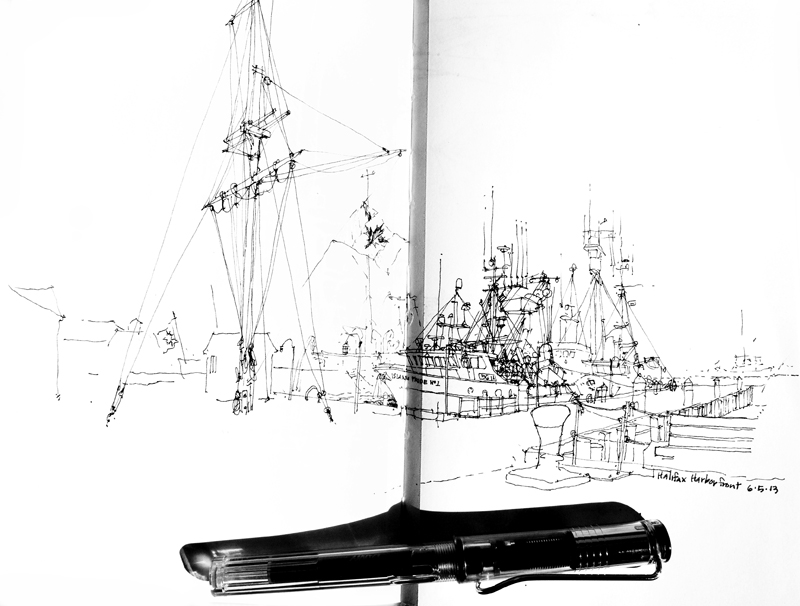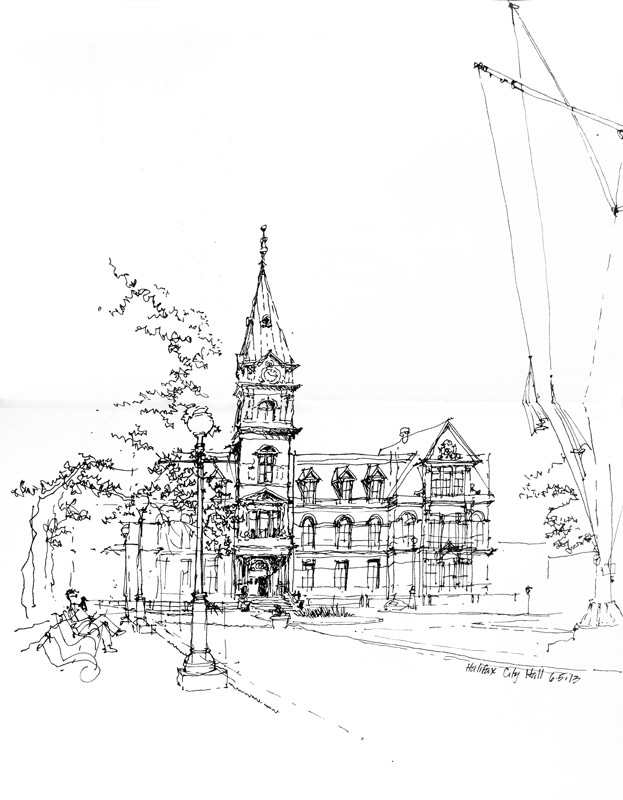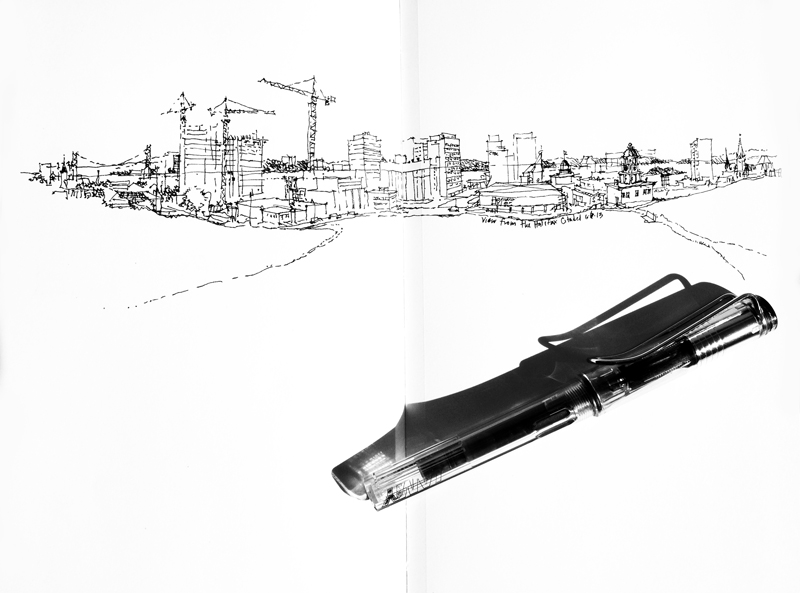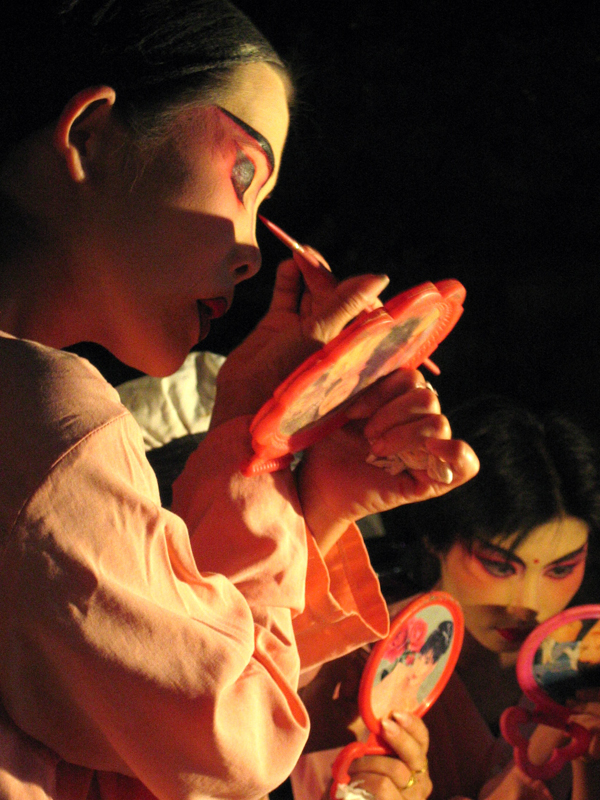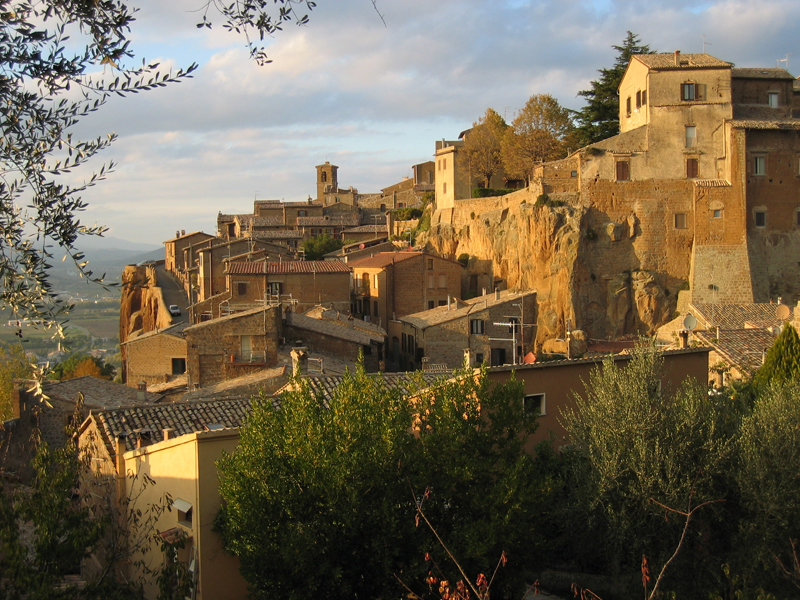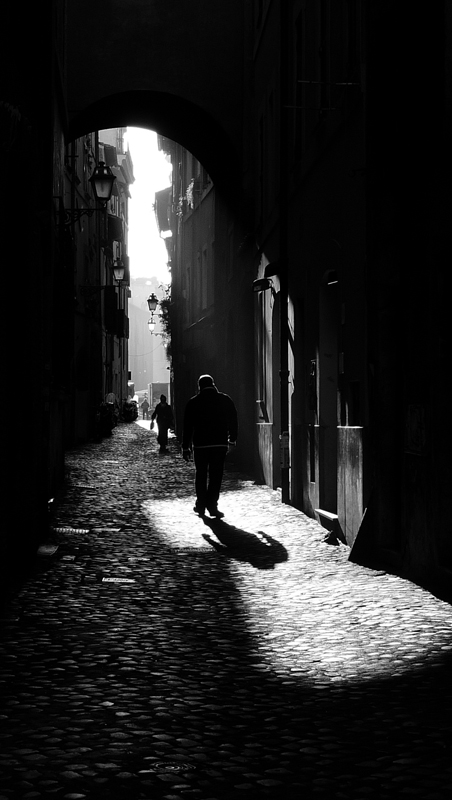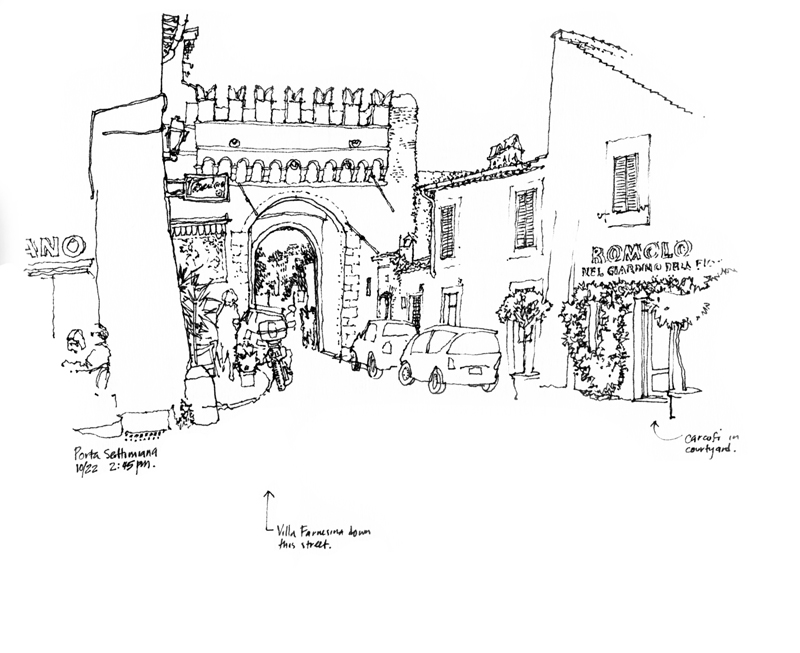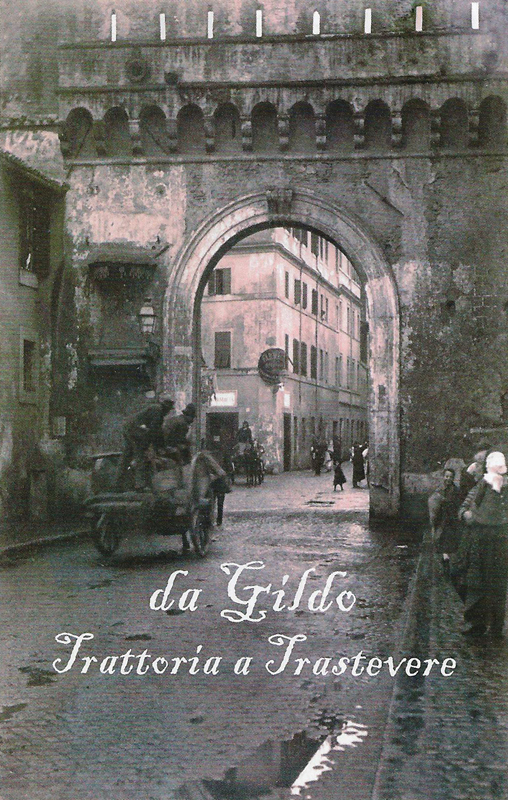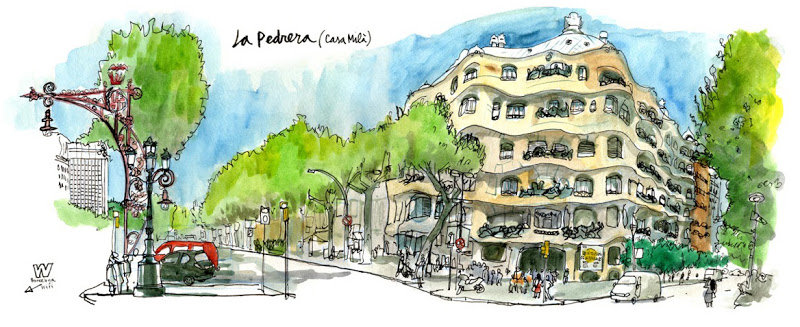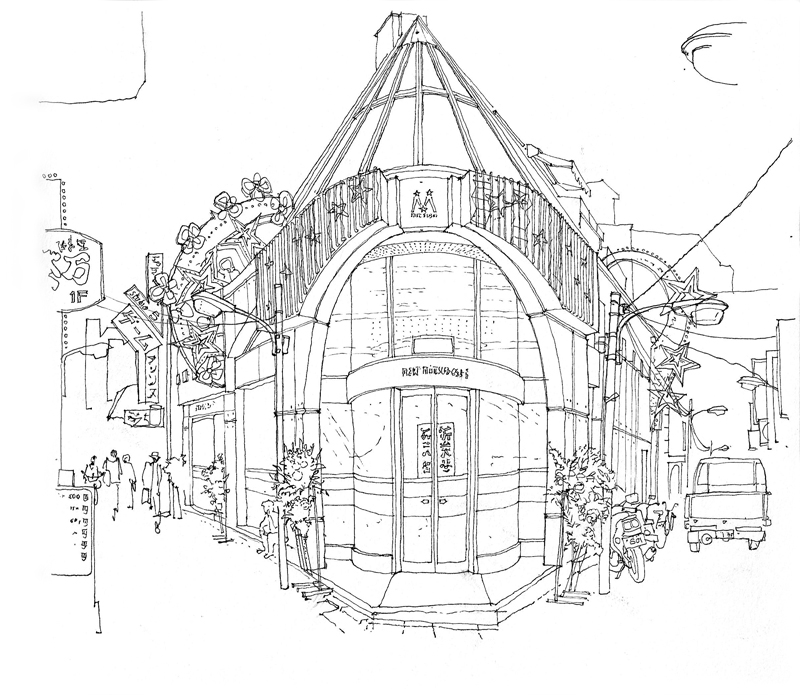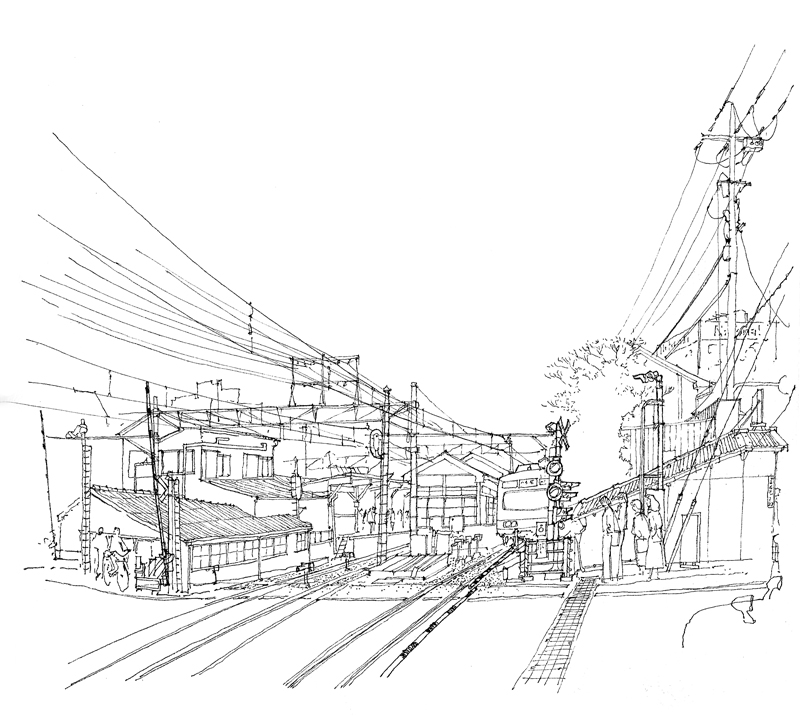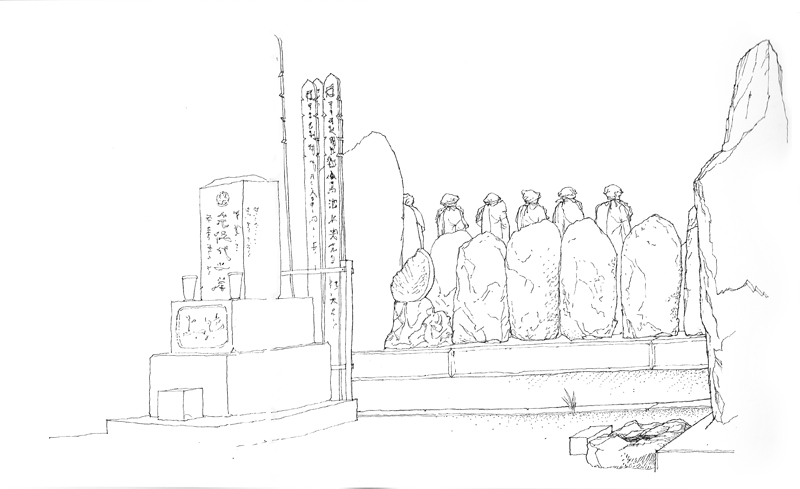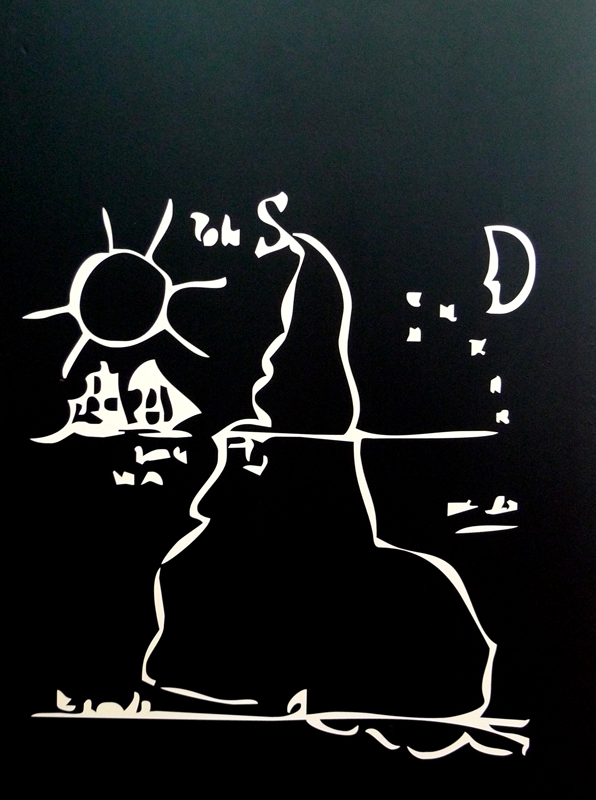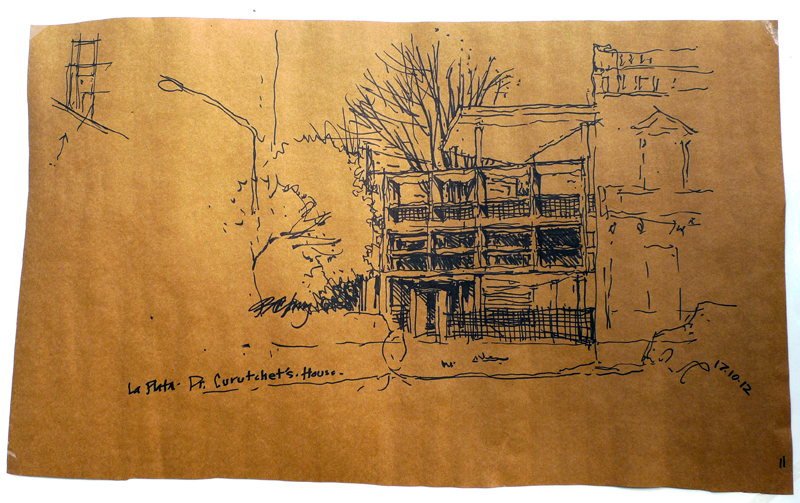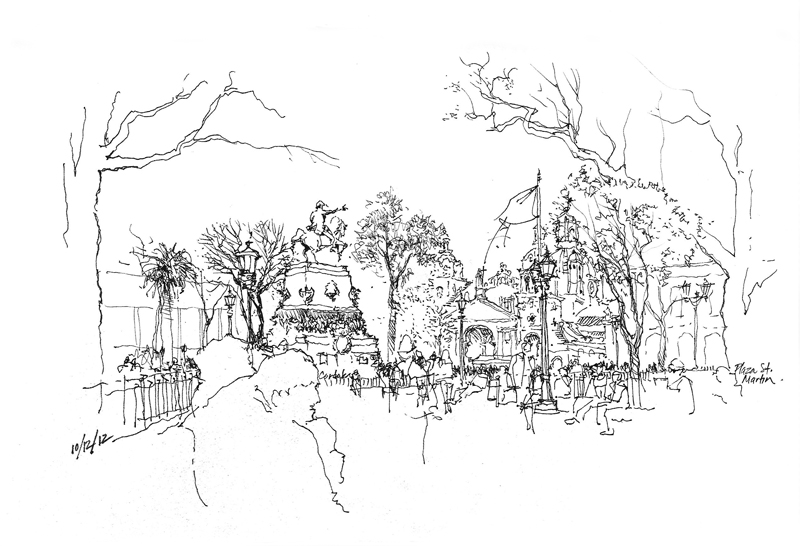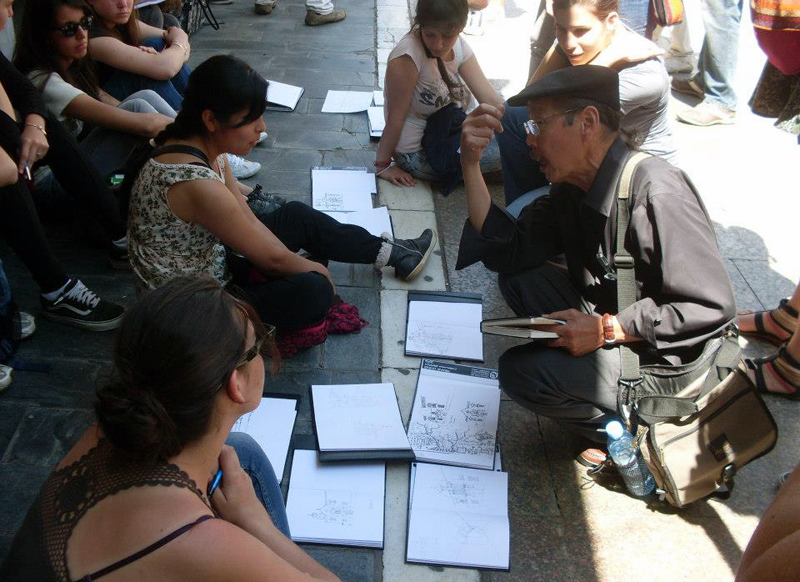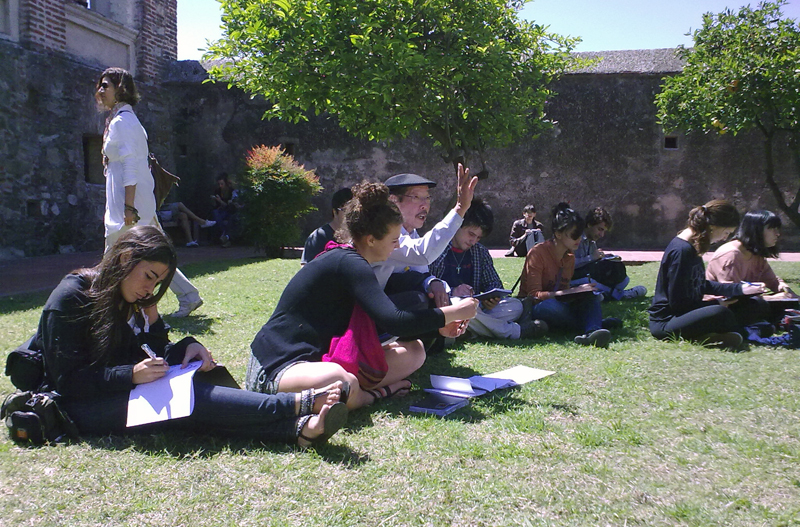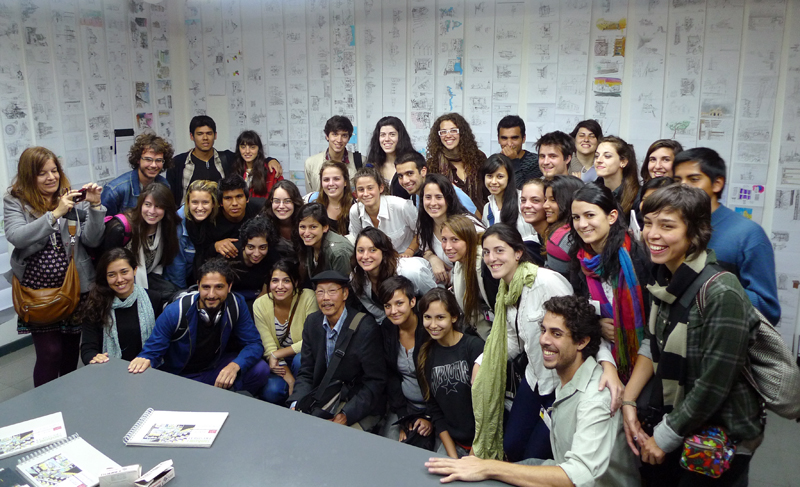Last Friday evening, the Royal Architectural Institute of Canada (RAIC), as part of their annual Festival of Architecture, held a convocation for its College of Fellows at the Canadian Museum of Immigration on Pier 21 in Halifax. Here is a sketch I did as I sat in the rear of the hall, watching as a new group of members were installed as RAIC Fellows.
The event reminded me that in this age when viral and often transitory moments dominate our consciousness, there still remains a place for tradition and stability in our lives, just as buildings still require a strong and stable foundation, even though hidden from view, upon which the newest forms and fads can be erected.


